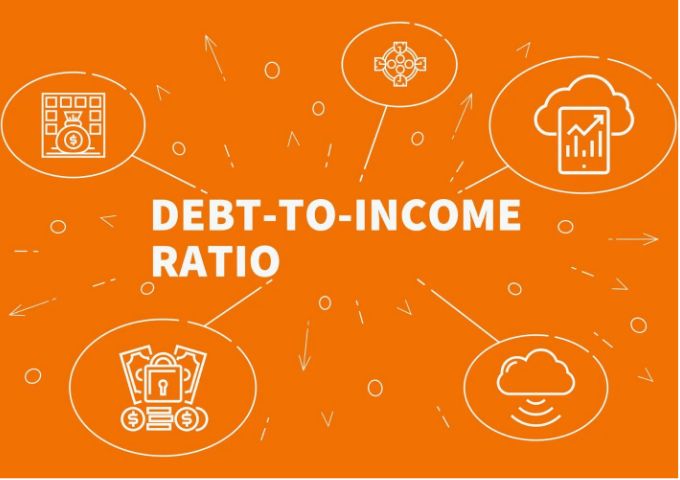Essential Year-End Tax-Saving Strategies for Canadians
Today, I’ll be breaking down the best year-end tax-saving tips for Canadians. These strategies are what I use every December to minimize my tax bill, maximize tax efficiency, and financially prepare for the new year. They are accessible tips that everyday Canadians can take advantage of to save money on their investment and employment income taxes. For those with business income, I’ll be making a separate video on business tax-saving tips.
Understanding Canadian Taxes
For this video, I’m assuming you understand the basics of Canadian taxes—tax brackets, marginal tax rates, and tax-sheltered accounts like the TFSA, RRSP, and RESP. If you’re a bit rusty on any of this, check out my Canadian tax guide playlist linked in the description below.
Maximize Your TFSA
The first tip is to maximize your TFSA. The TFSA is one of the best tax-sheltered investment vehicles in Canada. You can hold stocks, bonds, ETFs, REITs—pretty much any investment inside a TFSA—and all your investment income is completely tax-free. This means dividends, DRIPs, or capital gains earned inside the TFSA won’t be taxed. However, there is a limited amount you can contribute to your TFSA, which is based on your age. Make sure to check out my TFSA explained video for more details on contributions and investment types.
You should aim to maximize your TFSA as soon as possible, as this gives your investments more time to grow tax-free. If you still have unused TFSA room at the end of the year, do your best to contribute immediately. Remember, on January 1st, every Canadian gains an additional $6,000 of TFSA contribution room. If you made any TFSA withdrawals this year, you regain that amount as well. So, even if your TFSA is maxed out, be prepared to contribute on January 1st. I suggest stockpiling cash in December so you can invest tax-free right away. Just be cautious—never use your emergency savings to contribute to your investments. Pay off any credit card debts and ensure you have an emergency fund first.
Transferring Investments to Your TFSA
What if you don’t have cash in December and all your money is tied up in investments in a non-registered account (margin account)? In that case, you might be paying unnecessary taxes on those investments. Why pay taxes on investment income when you have room in tax-sheltered accounts? Consider transferring those stocks from your non-registered account into your TFSA. I’ll be making a detailed video on this transfer process, but essentially, the CRA will treat this as a sale of the stocks, meaning you may incur capital gains tax. However, all future income from those stocks will be tax-free in your TFSA.
When you transfer stocks into your TFSA, the contribution amount is based on the current market value of the stocks, not what you initially paid. For example, if it’s January 1st and you only have $6,000 of TFSA room, you can only transfer that amount in stocks, regardless of your initial investment. The key takeaway is to maximize your TFSA as soon as possible—saving cash in December is the simplest and most effective approach without worrying about capital gains tax.
RESP Contributions
If you have children, treat your RESP similarly to your TFSA at the year’s end. I’ve made two videos on how the RESP works and how to maximize government grants. The best strategy is to contribute $2,500 to each child’s RESP every year to receive the $500 government grant. Just like the TFSA, RESP investments grow tax-free, so aim to contribute as soon as the new year begins. I recommend prioritizing RESP contributions over TFSA contributions since the RESP also provides free government money.
Withdrawing from Your TFSA
But what if you don’t have extra cash and need funds? December is actually the best time to withdraw from your TFSA if necessary. Ideally, you should treat your TFSA as a long-term investment, but if you need cash, do it in December rather than January. When you withdraw from your TFSA, you lose that contribution room until the following January, but you regain the room on January 1st. For example, if you withdraw $4,000 from a maxed-out TFSA on December 31st, you’ll have $10,000 available for contribution on January 1st—$6,000 from the new contribution room plus the $4,000 you withdrew.
Tax Loss Harvesting
Another option for accessing cash is to sell stocks from your non-registered account. If you sell stocks or ETFs at a loss, you can actually reduce your tax bill. This strategy is called tax loss harvesting, and it’s often used at year-end. By intentionally selling an underperforming stock, you can offset capital gains taxes on profitable investments. Just remember, this only works in non-registered accounts—don’t attempt it in your TFSA, RRSP, or RESP.
When you sell a stock for less than you paid, you incur a capital loss, which can offset your capital gains and reduce your tax bill. For instance, if you bought a stock for $1,000 and it’s now worth $400, selling it results in a $600 capital loss, which can offset any gains you made during the year. This can even reduce your capital gains tax to zero if your total capital gains equal your capital losses. If you have no capital gains to offset this year, you can carry the loss backwards to offset gains from the past three years or carry it forward indefinitely.
Be Aware of Superficial Loss Rule
However, be aware of the CRA’s superficial loss rule. This rule prevents you or your spouse from buying and selling a losing stock within 30 days to offset capital gains. If you do, the loss will be denied, and you won’t be able to use it to lower your tax bill. Remember that transferring stocks from a non-registered account to a TFSA treats it as a sale, so if the stock has increased in value, you’ll incur capital gains tax. If the stock is down and you plan to hold it, it’s okay to transfer it, but you won’t be able to claim the loss. If you want to claim a capital loss, you need to sell for cash.
Timing Your Stock Sales
Another strategy for tax reduction is to wait until the new year to sell stocks. If you sell a stock for profit in December, you’ll pay capital gains tax when you file your taxes in April. However, if you wait until January to sell, the gains will be taxed the following year, giving you an extra year to enjoy that money before paying taxes. This is especially beneficial if you anticipate a lower income next year, as you’ll pay less in capital gains tax.
Contributing to Your RRSP
One of the best strategies for reducing your tax bill throughout the year, especially at year-end, is to contribute to your RRSP. Contributions to an RRSP not only grow tax-free but also reduce your taxable income, potentially leading to a tax refund. I’ve made two videos explaining RRSP rules, so be sure to check those out. If you have RRSP contribution room, contribute as soon as possible to enjoy those tax benefits. Even if you’re in a low tax bracket, you can carry forward RRSP deductions to a year when you have a higher income, maximizing your tax savings.
If you receive a large year-end bonus or your income is higher than normal, you’ll want to reduce your taxable income as much as possible. Contributing to your RRSP and claiming unused contributions can significantly decrease your tax bill. Remember that contributions made in the first 60 days of the following year can be applied against the previous year’s income.
Maximizing Employer Benefits
Finally, this isn’t a tax tip, but make sure to maximize your employer benefits before December 31st. Use your vacation days and take full advantage of your employer’s health benefits, such as dental or vision care. Don’t overlook these benefits, especially if you’re self-employed; you’ll miss them when they’re gone.
Conclusion
So there you have it! These are my favorite money-saving tips for December to reduce my tax bill and set myself up for financial success in the new year. Maximize your TFSA and RESP contributions, withdraw from your TFSA in December if necessary, and consider selling underperforming stocks to reduce your tax bill. Contribute to your RRSP to lower your taxable income, and don’t forget to utilize your employer’s health benefits.
FAQs
1. What is a TFSA, and why should I maximise it before the end of the year?
A Tax-Free Savings Account (TFSA) enables Canadians to earn investment income tax-free. Maximising your TFSA contributions before the end of the year allows your investments to grow tax-free for longer.
2. How do I transfer equities from a non-registered account into my TFSA?
You can transfer equities, but the CRA considers it a sale, so you may face capital gains tax depending on the current market value. The future earnings from these stocks will be tax-free in your TFSA.
3. What exactly is a RESP, and how does it help with tax savings?
An RESP (Registered Education Savings Plan) allows you to save for your children’s education while enjoying tax-deferred growth.Contributing $2,500 per year to each child’s RESP qualifies you for a $500 government incentive.
4. Is it advisable to withdraw from my TFSA this December?
Yes, if you require cash, December is the optimal time to withdraw from your TFSA. You reclaim that contribution room on January 1st, allowing you to give again right away.
5. What is the definition of tax loss harvesting?
Tax loss harvesting entails selling stocks or ETFs at a loss to offset capital gains taxes on profitable investments, so lowering your overall tax liability.









